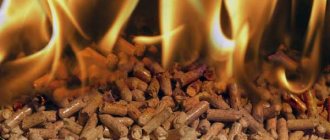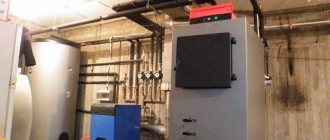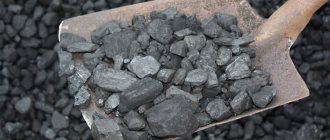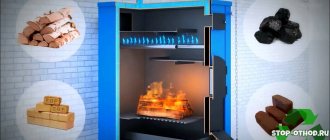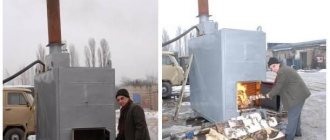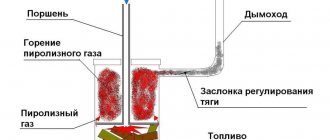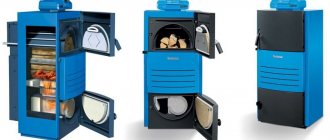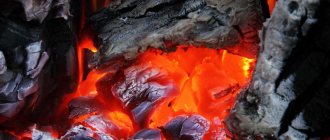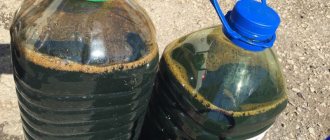Demand for the process
Since pyrolysis is a chemical process, it is accompanied by the formation of several substances that are widely used in industry. For example, coke, which is in demand in metallurgy, is produced in this way. Many household waste landfills are destroyed by thermal decomposition. Pyrolysis is a process that is not accompanied by the generation of waste, which is especially important for our planet.
Features of wood pyrolysis
This pyrolysis is a procedure for burning wood without the presence of air, carried out at a temperature of about 5000 degrees. The valuable products obtained during this interaction are acetic acid, acetone, methanol, and resin. The peculiarity of this chemical reaction is that charcoal can be used as an excellent fuel to accelerate many chemical reactions.
Such pyrolysis is a process that begins to occur at two hundred degrees Celsius, and the reaction is accompanied by the release of a mixture of carbon oxides. With the subsequent combustion of products in an atmosphere of atmospheric oxygen, an increase in the total calorie content is observed.
Wood pyrolysis is a separate section in chemistry that deserves detailed consideration and study.
Features of the destruction of household waste
Among the important areas of application of pyrolysis, the procedure for the destruction of household waste is of particular interest. The main obstacle to such a reaction is the presence of toxic compounds of sulfur, phosphorus, and chlorine in the waste. Such active elements are capable of forming compounds dangerous to living organisms. The procedure for recycling polymers and car tires is a cost-effective process that allows you to obtain a variety of secondary products.
Pyrolysis of garbage
Waste pyrolysis is a special project related to the destruction of household waste. The difficulty of carrying out pyrolysis of plastics, tires, and various organic wastes is due to the fact that a different technology is assumed, significantly different from the process of processing other solid materials.
Many wastes contain sulfur, chlorine, and phosphorus, which after oxidation (formation of oxides) acquire volatile properties. Pyrolysis products pose a threat to the environment.
When chlorine interacts with organic substances formed after the decomposition process is completed, strong toxic compounds such as dioxins are released. In order to capture such products from the emitted smoke, a special pyrolysis installation is required. Such a procedure involves significant material costs.
For European countries, the problem of recycling old car tires and rubber parts that have expired is of great environmental importance. Due to the fact that natural petroleum raw materials are an irreplaceable type of mineral resource, it is necessary to use secondary resources to the maximum extent.
A huge amount of various substances of organic and inorganic composition can be obtained from household and construction waste, which is why it is so important to develop this industrial direction.
Polymers and car tires are excellent valuable raw materials. After its processing by low-temperature pyrolysis, it is possible to obtain liquid fractions of saturated hydrocarbons (synthetic oil), flammable gas, carbon residue, and metal cord. When a ton of rubber tires is burned, about 270 kg of soot is released into the atmosphere, as well as about 450 kg of toxic gases.
Process stages
In the process of thermal pyrolysis, the following transformations occur:
- drying;
- cracking;
- complete combustion in the atmosphere;
- purification in absorbers of the resulting gaseous substances.
Waste incineration plants operating in our country are designed for different operating modes. To carry out complete recycling of household waste, gaseous substances are supplied to absorption apparatuses, in which they are completely cleansed of toxins.
The slag obtained as a result of the pyrolysis process is a valuable chemical product. It may contain rare metals used in the modern chemical industry.
During the operation of the processing plant, thermal and electrical energy and raw materials for chemical production are obtained.
Technology system
Schematic flow diagram of the pyrolysis process
Preheating
The naphtha feed stream (stream P01) is preheated and mixed with steam (C3) until a steam to naphtha ratio of about 0.5 (wt) is achieved. Since steam is inert (does not react with ethane or other components), its presence does not result in the formation of by-products. Maintaining steam between 0.3 and 0.5 is sufficient to reduce the partial pressure to keep the reaction in equilibrium with respect to ethylene and reduce conversion back to ethane. Next, the mixture is heated to 500 ○C (P2) and submitted for cracking.
By the way, read this article too: Petroleum bitumen production plant
Pyrolysis furnace and cooling unit
The cracking reaction takes place in the furnace coils, where the residence time of the raw material is about 0.6 s. This time is chosen to increase the yield of olefins at an operating mode of 850 °C and 1 bar. The cracked products (which exit the furnace at 850°C in P3) are cooled to 230°C (P4) by producing high pressure and low pressure (HP/LP) steam (C1 and C2) to generate electricity.
Typical furnace for carrying out the pyrolysis process
The gas product mixture is cooled with H2O and part of the liquid product fr. S9+. The reaction mixture contains a significant amount of olefins, which easily undergo polymerization and polycondensation reactions.
Quenching (quench) is a technological method that makes it possible to quickly stop cracking reactions by feeding cold raw materials or cooled petroleum products into hot cracking products.
Fractionation block
The resulting gas (P5) is cooled and fed into the main fractionation column, where heavy components (C9+) leave the column bottom (P8). Light components (P6) from the top of the column are first cooled to ambient temperature and sent to a separator, where the gas and liquid streams are separated. The gas stream (P07) is compressed in a multi-stage compressor with intermediate cooling to 3.1 MPa. In the process of gas compression and subsequent cooling, a liquid phase is formed, which is then sent to a stripping column to extract liquid aromatic hydrocarbons (P26).
During gas compression (usually the last stage), the gas is purified using caustic soda (NaOH) to remove acid gases. Then the purified gas (P10) is dried using zeolites and sent to the fractionation section of the pyrolysis unit. The gas is first cooled to a temperature of about minus 50 °C and fed into a demethanizer .
Demethanizer
Demethanizer is a distillation column designed to separate methane from a mixture of hydrocarbon components or gas gasoline as a rectifier. They are used to remove non-condensable components, the content of which in products sold is limited. Demethanizers operate at a pressure of 3.5-4.0 MPa, temperature in the reflux tank from -60 to -90 °C.
Uncondensed gases exit the top of the column. Next, the gas passes through a turboexpander, as a result of which its pressure is reduced to 0.1 MPa and the gas is cooled. The cooled gas stream is used to cool the feedstock at the inlet of the demethanizer, after which it is used as fuel in the furnace (T1) and in the boiler (T2).
By the way, read this article too: Hydrogen production plant
A turboexpander is a centrifugal or axial turbine through which high-pressure compressed gas expands, releasing energy that is often used to drive a compressor or generator.
The low pressure gas leaving the turbine has a very low temperature of minus 150°C or less, depending on the operating pressure and gas properties.
The bottom product of the demethanizer at a pressure of 2.6 MPa (P12) is fed into the deethanizer.
Deethanizer
The deethanizer distillate is first sent to a hydrogenation reactor where acetylene (C2H2) is converted to ethylene. Then the mixture of C2 components is separated in a distillation column operating at a pressure of 1.8 MPa.
The bottom product of the deethanizer is fed to the depropanizer.
Depropanizer
The depropanizer distillate is first sent to a hydrogenation reactor to convert methyl acetylene (C3H4) to propylene (C3H6) and then sent to a C3 separation column operating at 2.1 MPa.
The bottom product of the depropanizer is sent for separation to the debutanizer.
Debutanizer
The debutanizer distillate (P24) is mixed with the remaining uncondensed gases and used as boiler fuel.
Heavy hydrocarbons from the debutanizer bottom (P25) are sent for the extraction and separation of aromatic hydrocarbons.
Columns for separating fractions C2 and C3
The distillation column for separating hydrocarbons C2 contains more than 120 plates. Ethylene is removed from the top of the column and, after heat recovery, is available for the polymerization process (P17). The separation column C3 contains more than 240 plates to achieve the desired purity of propylene (grade of polymer) in the output distillate (P22).
The plant is fully integrated with the steam cycle, in which steam (at varying pressures) is produced and distributed throughout the plant. The heat from the furnace flue gases is used to preheat the reactants to the required temperature and to produce steam. The steam produced has a pressure of 10.0 MPa and is superheated to 500 °C. Low pressure steam is used for cracking reactions and for reboilers in the plant.
Prospects of pyrolysis
When certain catalysts are introduced into a chemical reaction, a significant increase in the yield of products is observed. Scientists are working on the problem of contamination of catalysts during the reaction. In experimental installations, the effectiveness of inhibitors and activators that can reduce the rate of the secondary pyrolysis process is tested.
Recently, special attention has been paid to the development of a method for physically accelerating pyrolysis using an electromagnetic field.
In everyday life, cracking-based furnaces, which consist of two chambers, are in demand. In one part the fuel is sublimated by cracking, and in the second chamber its direct combustion takes place.
The chemistry of transformations is based on the phenomenon of biomass combustion. First, charring of the wood is observed, then it smokes, then flares up, and completely turns into gaseous products. Under the influence of high temperature, destruction (thermal decomposition) of wood occurs, which leads to the release of a mixture of flammable gaseous substances. Their quantitative indicator directly depends on the temperature indicator. If it exceeds 450 degrees, a small amount of gaseous substances is formed, they do not flare up. The optimal temperature for the wood pyrolysis process is 900 degrees Celsius. When the entire surface of the wood is heated to this level, it ignites.
In this case, additional energy is released, as a result of which the chemical process is significantly accelerated. When access to the reaction mixture of oxygen is limited, decomposition occurs at the initial rate. The resulting gases are removed and used for various areas of chemical production.
Under natural conditions, pyrolysis occurs in conjunction with combustion. First, the wood is heated from an external energy source, then the process of decomposition occurs. If access to the reaction mixture of oxygen is limited, fire may occur. The peculiarity of the process is that there is no need to use an additional energy source.
pyrolysis
PYROLYSIS (thermal decomposition, pyrogenetic transformation, dry distillation) (from the Greek pyr - fire and lysis - decomposition, decay)
decomposition or other chemical transformations. connections when heated.
Naib. distribution of the term "P." received in org. chemistry to designate high-temperature destructive transformations. org. compounds accompanied by splitting of the cond. with the formation of products of smaller mol. mass (including simple substances), isomerization, polymerization or polycondensation of the starting compounds. and products of their transformation. With the help of P., fuels and oils are produced in industry (through thermal cracking, visbreaking, coking, semi-coking) or raw materials for petrochemicals. synthesis (during the destruction of petroleum raw materials, pyrolysis of wood, destruction of organic waste).
About P. alifatich. hydrocarbons that make up oil, and the reaction mechanism, see pyrolysis of petroleum feedstock. Aromatic hydrocarbons are thermally more stable than aliphatic ones (except CH4). Benzene at 700–750 °C forms phenyl radicals and then di-phenyl. The addition of other aromatic hydrocarbons at 800–850 °C leads to a mixture consisting of benzene, naphthalene, anthracene, phenanthrene, and other polycyclics. aromatic hydrocarbons.
Alifatich. alcohols at 500–700 °C undergo P. with the release of H2O and the formation of olefins (at lower temperatures) or the release of H2 and the formation of aldehydes (at higher temperatures). Tertiary alcohols undergo P. more easily than secondary and primary ones. Phenols are stable up to 800 °C. For example, phenol converts only at 850–900 °C. into a mixture of benzene, n-hydroxydiphenyl and diphenyl ether (diphenyl oxide). Products P. ethers and esters-prem. olefins. Ethyl, propyl and tert-butyl acetates at 500, 450 and 350 °C, respectively. transform into acetic acid and the corresponding olefin by a non-radical mechanism. The destruction of methyl acetate with the formation of CH4, H2, CO occurs via a radical mechanism at temperatures above 600 °C. Products of P. aliphatic. aldehydes and ketones - saturated and unsaturated hydrocarbons, CO and H2. P. acetone at temperatures above 550 °C-ind. method for producing ketene. Carboxylic acids undergo preferential treatment during P. at sufficiently low temperatures. decarboxylation. Thus, P. acetoacetic acid at 100 °C leads to acetone, P. malonic acid at 140 °C leads to acetic acid. The structure of P. products in the case of dicarboxylic acids depends on the relative arrangement of carboxyl groups; for example, succinic acid and its homologues form a cyclic acid. five-membered anhydrides, glutaric acid and its homologues are six-membered. P. salts org. acids usually occurs at 300–500 °C; used to obtain a number of org. connections. For example, Na oxalate is industrially obtained from Na formate at P (400°C), and acetone is obtained from Ca and Ba acetates. P. salts of dicarboxylic acids at 350–400 °C - a method for obtaining cyclic. ketones (Ruzicka reaction). Basic P. aliphatic products amines-ethylene hydrocarbons and nitriles. At temperatures above 700 °C P. goes deeper with the formation of saturated hydrocarbons, HCN and N2. P. halogen-containing compounds. accompanied by the release of hydrogen halides and the cleavage of C-C bonds and isomerization. Alkyl halides with several halogen atoms convert. in unsaturated halogen-containing compounds; from tri- and tetrachloromethanes are formed, respectively. hexa-chlorobutadiene and tetrachlorethylene. Aromatic compounds containing a halogen atom in the ring are stable up to 700 °C. Halogen derivatives of benzene during P. form biphenyl derivatives; e.g., chlorobenzene converting in 4,4-di-chlorobiphenyl.
Prom. P. metal carbonyls with the formation of metallic compounds are also used. powders, P. CaCO3 with the formation of CaO, pyrohydrolysis of some inorg. salts into oxides, etc.
Lit.: Zhorov Yu. M., Kinetics of industrial organic reactions, M., 1989; Brown RF, Pyrolytic methods in organic chemistry, NY, 1980, p. 440; Mc Craw-Hill encyclopedia of chemistry, NY, 1983, p. 14–15. See also lit. at Art. pyrolysis of petroleum feedstock.
Yu. M. Zhorov
Source: Chemical Encyclopedia on Gufo.me
Meanings in other dictionaries
- PYROLYSIS - PYROLYSIS (from the Greek pyr - fire and ... lysis) - decomposition of chemical compounds when heated. Pyrolysis of petroleum raw materials, wood, etc. is of industrial importance. Large encyclopedic dictionary
- pyrolysis - An irreversible thermal process of decomposition of substances without oxidation. [137] Construction terminology
- pyrolysis - [gr. fire + decomposition] – oil refining with its decomposition at high temperatures (600 – 900°) in gas generators or retort furnaces; this produces 50% gas and 40 - 45% gas resin, which are further processed... Large dictionary of foreign words
- Pyrolysis - (from the Greek pýr - fire, heat and lýsis - decomposition, decay) the transformation of organic compounds as a result of their destruction under the influence of high temperature. Usually the term is used in a narrower sense and is defined ... Great Soviet Encyclopedia
- pyrolysis - orf. pyrolysis, -a Lopatin's Spelling Dictionary
- PYROLYSIS - PYROLYSIS, chemical decomposition of complex substances into simpler ones under the influence of heat. Using pyrolysis, valuable fuels and chemicals are obtained from industrial waste and coal. Scientific and technical dictionary
- Pyrolysis - (from the Greek pyr - fire, heat and lysis - decomposition, decay * a. pyrolysis; n. Pyrolise; f. pyrolyse, thermolyse; i. pirolisis) - decomposition of substances under the influence of high temperatures. Usually the term is used in a narrower sense and is defined... Mining Encyclopedia
- Blog
- Jerzy Lec
- Contacts
- Terms of use
© 2005—2021 Gufo.me
Application specifics
In an ideal situation, pyrolysis is carried out in a confined space without an influx of air oxygen, with a constant supply of energy. To reduce energy costs for this chemical process, flammable gases generated during pyrolysis are used. As the main equipment used in production, it is necessary to mention gas generators, filters, and cooler units.
Waste in the form of wood chips, sawdust, shavings is placed in a furnace, then the procedure of burning them is carried out with a minimum air supply. Taking into account the dependence between the productivity of the installation and the temperature of the process, the industry uses the option of fast pyrolysis, which involves heating the raw materials to the maximum temperature.
The released gases are cooled, filtered, and pumped into special tanks for subsequent use.
The pyrolysis of coal produces a mixture of valuable products. The peculiarity of this process is the need to heat the mixture to a high temperature. What valuable components for chemical production can be obtained from wood pyrolysis?
First of all, we will highlight coke, which is used in large volumes during the steel smelting process. In addition, the resulting gaseous mixture contains ammonia, which is in demand in fertilizer chemistry.
Aniline is the main component of enamels and paints produced in modern industry. Toluene is a valuable raw material for the production of dyes and explosives.
Advantages and disadvantages
Flaws
- high capital costs due to the presence of extremely high and low temperatures at the installation (from -160 to +900 °C)
- coke deposits in the furnace coils, pyrolysis vapor cooler due to high temperatures
Advantages
- high and constantly growing demand for pyrolysis products
- the ability to design a plant for any possible types of raw materials from gas to gas oil to obtain the required basket of petroleum products.
By the way, read this article too: Gas Fractionation Unit (GFU)
Types of boilers
Such units can have two structure options. Among the popular models, we note devices in which the first firebox is located above the second. They are connected using a rectangular nozzle made of special refractory bricks. High-quality pyrolysis produces many useful chemicals, and the process does not involve significant oxygen consumption. The thermal decomposition of hydrocarbons is an excellent way to obtain gaseous substances used in subsequent synthesis.
